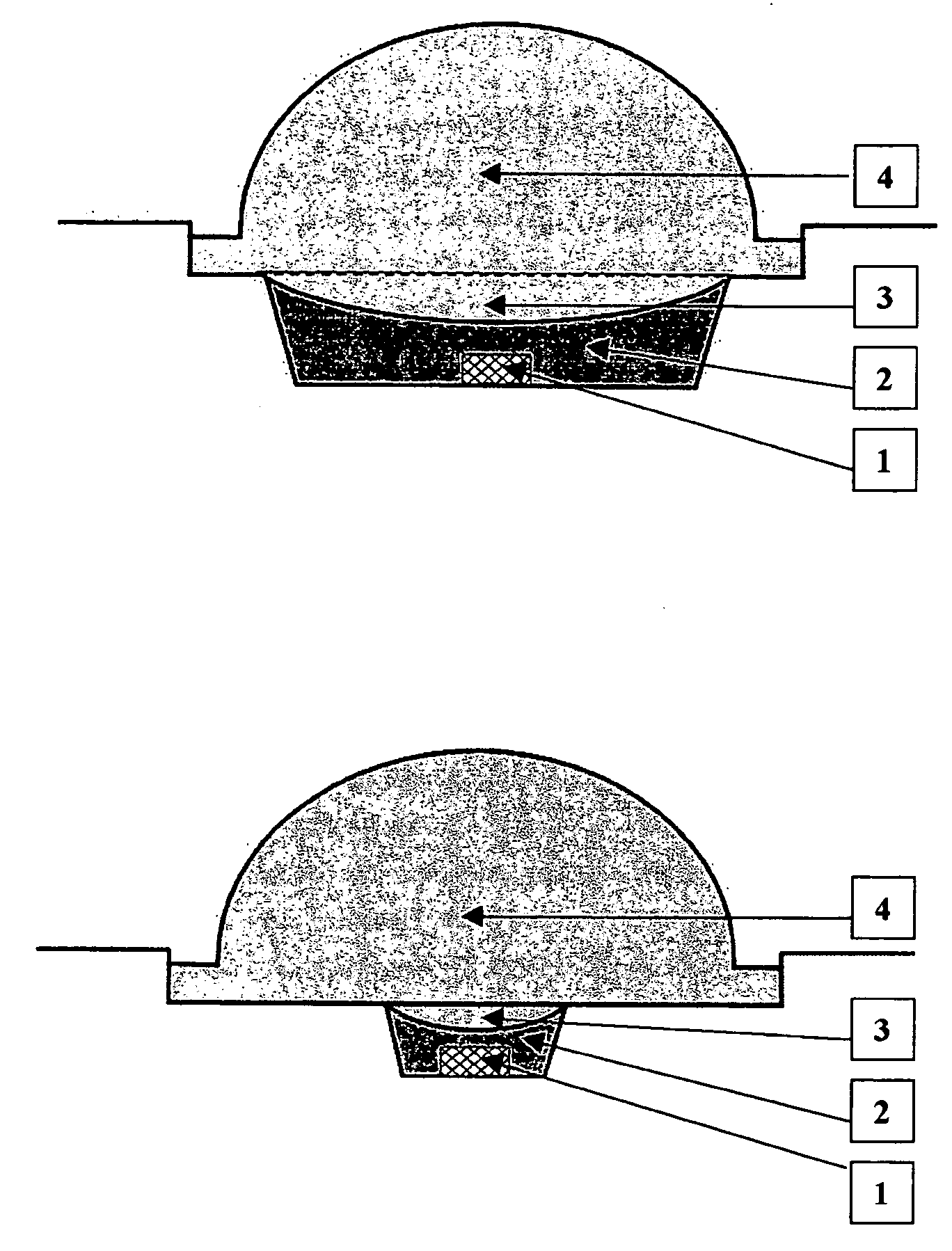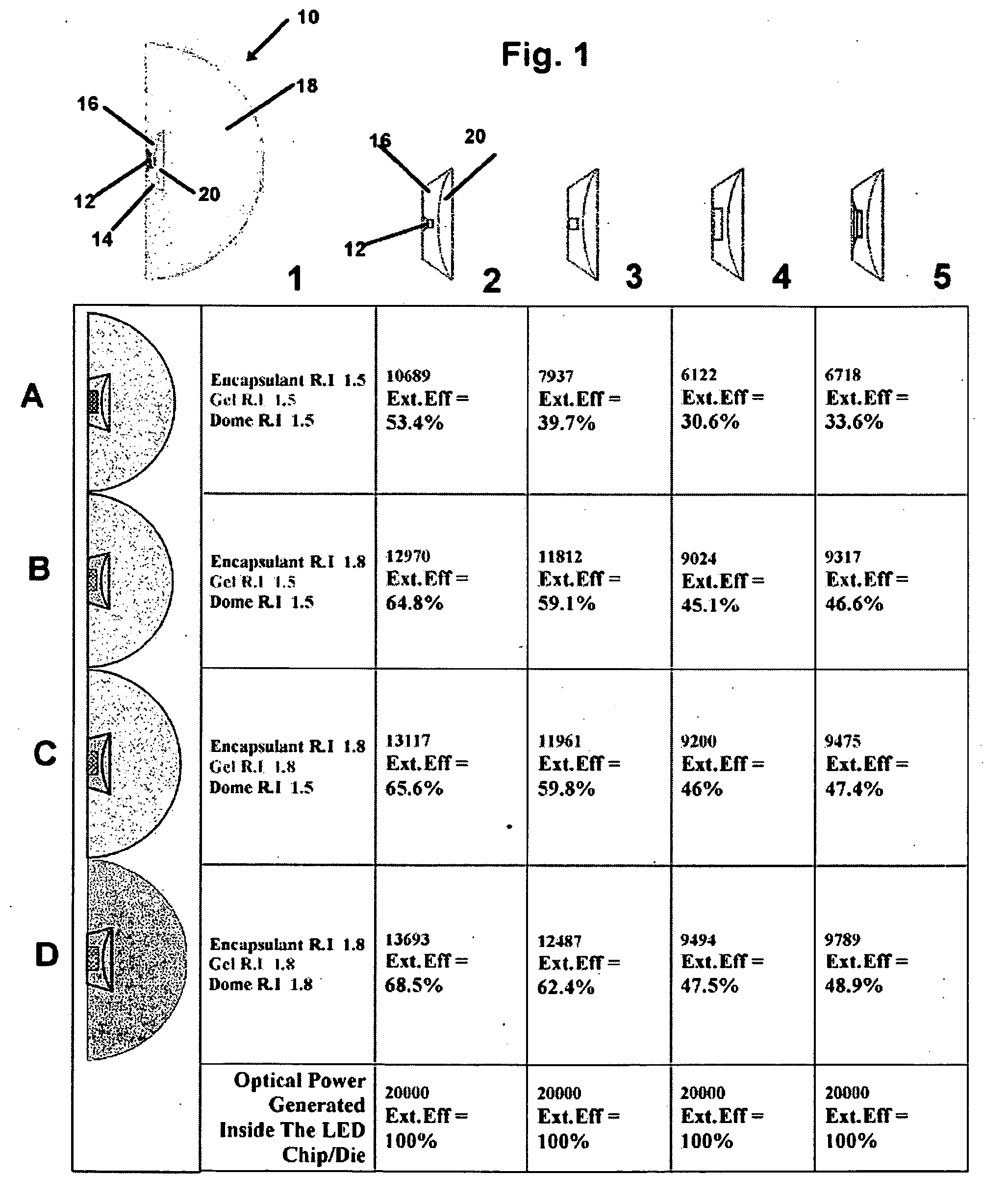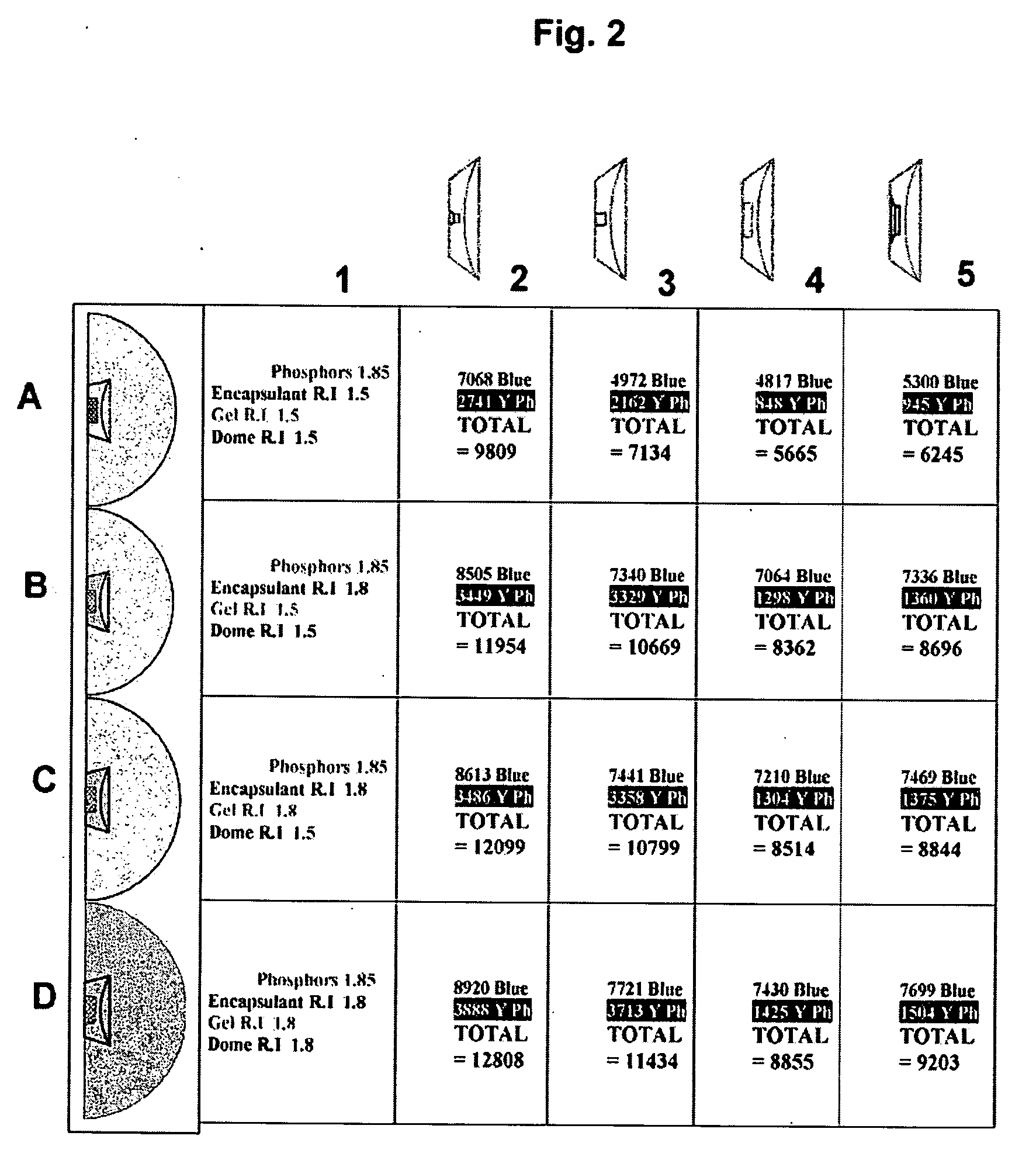Light efficient packaging configurations for LED lamps using high refractive index encapsulants
- Summary
- Abstract
- Description
- Claims
- Application Information
AI Technical Summary
Benefits of technology
Problems solved by technology
Method used
Image
Examples
embodiment
Hybrid Embodiment
[0046]FIG. 14 illustrates a hybrid embodiment of the present invention in a which a “mini-dome”142 is disposed at the center of the concave lens 144 of the Top-Emitting SMD device as discussed above in FIGS. 11-13. The diameter (“footprint”) of the mini-dome 142 is between 100 to 1000 microns and is typically on the order dimension of the die / chip 146. The height of the mini-dome 142 is such that it does not protrude above the rim of the package (thus maintaining its form-factor) and is typically on the order of several 100 microns.
[0047] The table of FIG. 14 illustrates various configurations of LED die / chip 146 shown in rows A-C with various sizes of mini-domes 142 shown in columns 3-5. Column 1 lists the dimensions of the mini-dome: FP=footprint (diameter), R=radius of curvature of the spherical mini-dome / position of center of curvature of the mini-dome above bottom of the package, H=height of the mini-dome above the concave lens, the light output (LEE or WPE) a...
PUM
 Login to View More
Login to View More Abstract
Description
Claims
Application Information
 Login to View More
Login to View More - R&D
- Intellectual Property
- Life Sciences
- Materials
- Tech Scout
- Unparalleled Data Quality
- Higher Quality Content
- 60% Fewer Hallucinations
Browse by: Latest US Patents, China's latest patents, Technical Efficacy Thesaurus, Application Domain, Technology Topic, Popular Technical Reports.
© 2025 PatSnap. All rights reserved.Legal|Privacy policy|Modern Slavery Act Transparency Statement|Sitemap|About US| Contact US: help@patsnap.com



